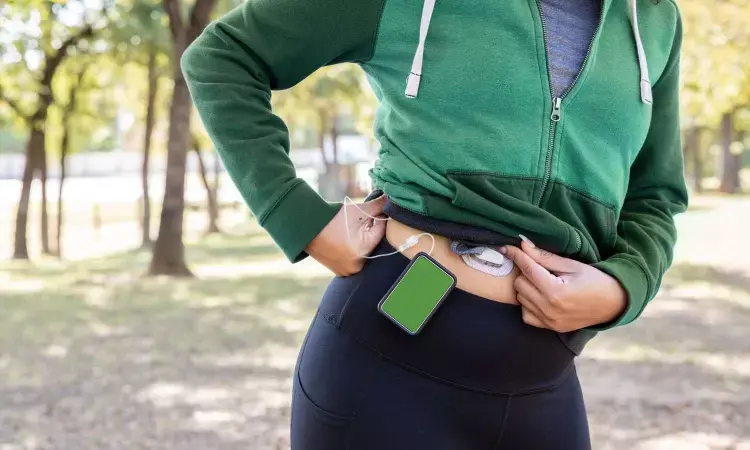- Home
- Medical news & Guidelines
- Anesthesiology
- Cardiology and CTVS
- Critical Care
- Dentistry
- Dermatology
- Diabetes and Endocrinology
- ENT
- Gastroenterology
- Medicine
- Nephrology
- Neurology
- Obstretics-Gynaecology
- Oncology
- Ophthalmology
- Orthopaedics
- Pediatrics-Neonatology
- Psychiatry
- Pulmonology
- Radiology
- Surgery
- Urology
- Laboratory Medicine
- Diet
- Nursing
- Paramedical
- Physiotherapy
- Health news
- Fact Check
- Bone Health Fact Check
- Brain Health Fact Check
- Cancer Related Fact Check
- Child Care Fact Check
- Dental and oral health fact check
- Diabetes and metabolic health fact check
- Diet and Nutrition Fact Check
- Eye and ENT Care Fact Check
- Fitness fact check
- Gut health fact check
- Heart health fact check
- Kidney health fact check
- Medical education fact check
- Men's health fact check
- Respiratory fact check
- Skin and hair care fact check
- Vaccine and Immunization fact check
- Women's health fact check
- AYUSH
- State News
- Andaman and Nicobar Islands
- Andhra Pradesh
- Arunachal Pradesh
- Assam
- Bihar
- Chandigarh
- Chattisgarh
- Dadra and Nagar Haveli
- Daman and Diu
- Delhi
- Goa
- Gujarat
- Haryana
- Himachal Pradesh
- Jammu & Kashmir
- Jharkhand
- Karnataka
- Kerala
- Ladakh
- Lakshadweep
- Madhya Pradesh
- Maharashtra
- Manipur
- Meghalaya
- Mizoram
- Nagaland
- Odisha
- Puducherry
- Punjab
- Rajasthan
- Sikkim
- Tamil Nadu
- Telangana
- Tripura
- Uttar Pradesh
- Uttrakhand
- West Bengal
- Medical Education
- Industry
Assisted insulin delivery system improves postexercise nocturnal glycemic management in adults and adolescents

Canada: In adults and adolescents with type 1 diabetes, assisted insulin delivery (AID) systems improved nocturnal glycemic management in post-exercise settings compared to usual care, as shown in research published in Diabetes Technology & Therapeutics.
The findings showed dual-hormone (DH)-algorithm-assisted insulin delivery (AID) to be better than single-hormone (SH)-AID in adults but not adolescents.
The study was conducted by Zekai Wu, McGill University, Montreal, Quebec, Canada, and colleagues compared the efficacy of dual-hormone and single-hormone algorithm-assisted-assisted insulin delivery and usual care on postexercise overnight glucose in 17 adolescents and 41 adults with type 1 diabetes. They aimed to draw more decisive conclusions by polling data from all available studies.
For this purpose, the researchers pooled data from two three-arm, open-label, randomized, controlled crossover studies. Forty-one adults [median age: 34.0 years, mean HbA1c: 7.5% ± 1.0%] and 17 adolescents with T1D [age: 14.0, HbA1c: 7.8% ± 0.8%] underwent DH-AID, SH-AID, and usual care. Each intervention comprised evening aerobic exercise of 60 min.
Using a linear mixed effect model or generalized linear mixed model, the researchers compared the time in range% (TIR%) overnight postexercise based on continuous glucose monitoring (primary outcome) among the treatments.
The study led to the following findings:
- Mean TIR% was 83.1% ± 20.5%, 94.0% ± 11.9%, and 65.1% ± 37.0%, respectively, during SH-AID, DH-AID, and usual care intervention.
- SH-AID was superior to usual care, and DH-AID was superior to SH-AID and usual care concerning hyperglycemia and hypoglycemia prevention but not variability in blood sugar.
- DH-AID and SH-AID reduced dysglycemia among adolescents, but not glycemic variability, better than usual care.
- Between DH-AID and SH-AID, glycemic outcomes were comparable.
"The results indicate that AID systems compared to the usual care lead to better management of nocturnal glucose in the post-exercise setting in adults and adolescents with type 1 diabetes," the researchers concluded.
Reference:
Zekai Wu, Jane E. Yardley, Virginie Messier, Laurent Legault, Caroline Grou, and Rémi Rabasa-Lhoret.Comparison of Nocturnal Glucose After Exercise Among Dual-Hormone, Single-Hormone Algorithm-Assisted Insulin Delivery System and Usual Care in Adults and Adolescents Living with Type 1 Diabetes: A Pooled Analysis.Diabetes Technology & Therapeutics.Oct 2022.754-762.http://doi.org/10.1089/dia.2022.0149
Dr Kartikeya Kohli is an Internal Medicine Consultant at Sitaram Bhartia Hospital in Delhi with super speciality training in Nephrology. He has worked with various eminent hospitals like Indraprastha Apollo Hospital, Sir Gangaram Hospital. He holds an MBBS from Kasturba Medical College Manipal, DNB Internal Medicine, Post Graduate Diploma in Clinical Research and Business Development, Fellow DNB Nephrology, MRCP and ECFMG Certification. He has been closely associated with India Medical Association South Delhi Branch and Delhi Medical Association and has been organising continuing medical education programs on their behalf from time to time. Further he has been contributing medical articles for their newsletters as well. He is also associated with electronic media and TV for conduction and presentation of health programs. He has been associated with Medical Dialogues for last 3 years and contributing articles on regular basis.
Dr Kamal Kant Kohli-MBBS, DTCD- a chest specialist with more than 30 years of practice and a flair for writing clinical articles, Dr Kamal Kant Kohli joined Medical Dialogues as a Chief Editor of Medical News. Besides writing articles, as an editor, he proofreads and verifies all the medical content published on Medical Dialogues including those coming from journals, studies,medical conferences,guidelines etc. Email: drkohli@medicaldialogues.in. Contact no. 011-43720751


